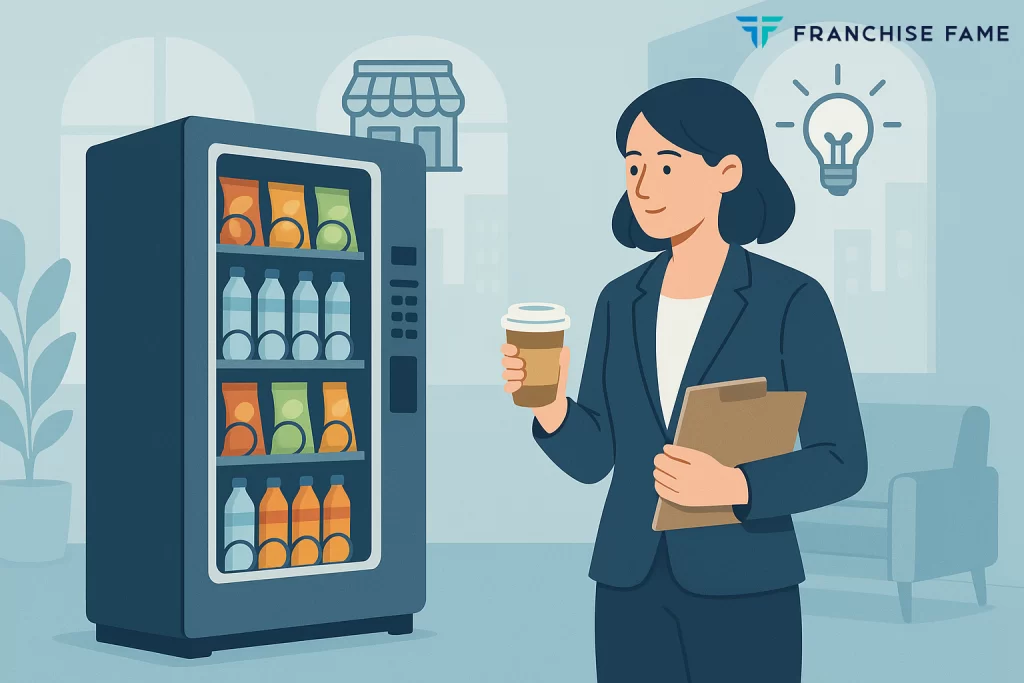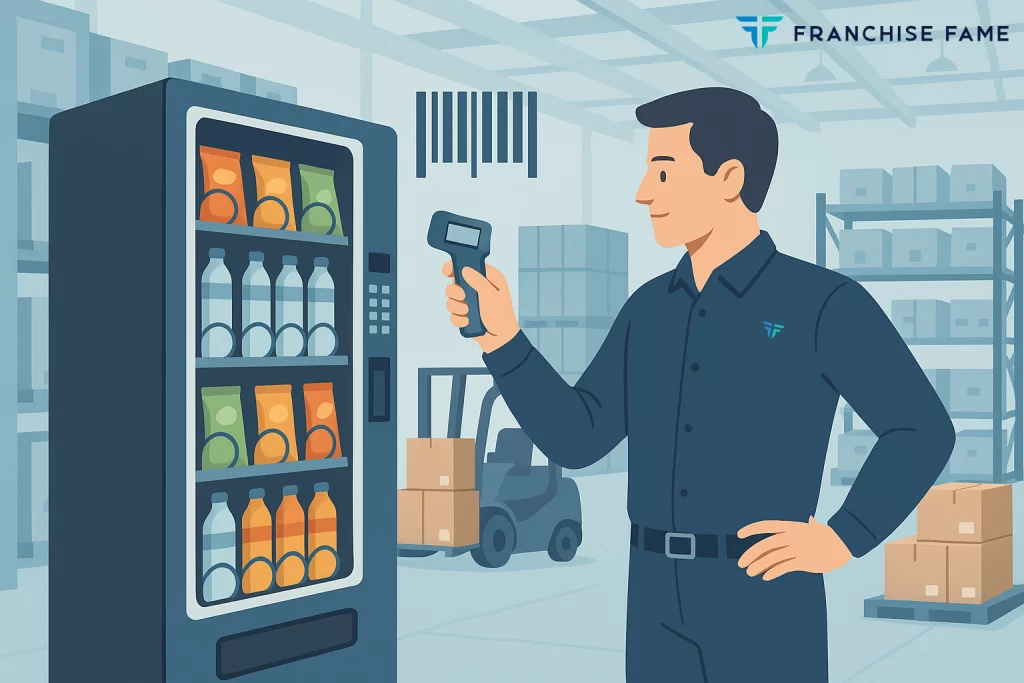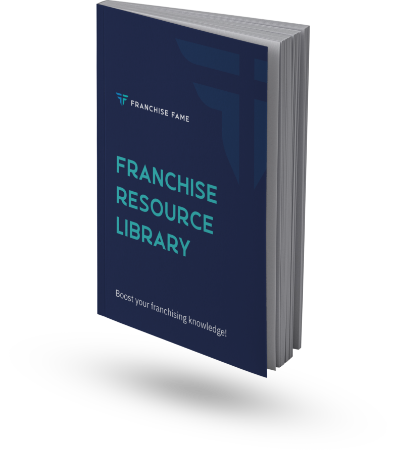For aspiring entrepreneurs looking to break into the US vending machine market, a franchise offers a proven path forward. With low startup costs, scalable potential, and minimal staffing requirements, vending continues to attract first-time business owners and seasoned investors alike.
But one of the biggest hurdles is financing your investment. Regardless of whether you’re considering a healthy snack franchise, a smart vending model, or an ice and water machine brand, understanding your financing options, investment requirements, and the step-by-step guide to acquisition is critical.
This article covers everything you need to know about how to buy and finance a vending machine franchise, from SBA loans to franchisor financing and the legal and financial setup process.
Ready to explore brands? Visit our main vending franchise directory for opportunities across multiple niches and states.
In this article:
Financing Options for Vending Machine Franchises
Access to capital is often the first major obstacle when launching any business. Fortunately, vending offers several financing routes, each with its own eligibility requirements, application process, and pros/cons.

SBA loans and traditional bank funding
The Small Business Administration (SBA) partners with lenders to provide government-backed loans tailored for small businesses, including franchisees.
- Eligibility criteria: Good credit score (typically 650+), solid business plan, proof of income/assets, and US citizenship or residency. Many franchisors on the SBA Franchise Directory are pre-approved, streamlining the application process.
- Application process: Submit financial documents, tax returns, and business plans to your lender. The SBA guarantees a portion of the loan, reducing risk for banks.
- Pros: Lower interest rates, longer repayment terms, higher loan amounts ($50,000–$5 million).
- Cons: Lengthy approval process, extensive paperwork, strict eligibility standards.
Traditional bank loans remain another option, though they often come with stricter credit requirements and higher interest rates compared to SBA-backed financing.
Franchisor financing and equipment leasing
Some vending franchisors offer in-house financing programs, either directly or through partnerships with third-party lenders. This can cover franchise fees, machine purchases, and even working capital.
- Eligibility criteria: Varies by franchisor, but generally requires proof of income, net worth minimums, and a reasonable credit score.
- Application process: Typically integrated into the franchise onboarding stage. The franchisor guides you through the lender application or provides financing terms directly.
- Pros: Simplifies startup, reduces upfront capital requirements, flexible repayment tied to revenues.
- Cons: May come with higher interest rates, limited financing scope, or restrictions on machine purchases.
Equipment leasing is another common route. Instead of buying machines outright, you lease them with monthly payments. This reduces initial startup costs, though long-term expenses can add up.

Step-By-Step Guide to Buying a Franchise
Once financing is secured, it’s time to move through the step-by-step guide of acquiring a vending franchise.
Research and evaluate opportunities
The first step is to evaluate which vending franchise aligns with your goals.
- Franchise discovery and selection: Explore opportunities on our top vending franchises page. Examples include HealthyYOU Vending, Pharmabox, Naturals2Go, Ben’s Soft Pretzels, and IceBorn. Each offers a different business model, from healthy snacks to ice and smart vending solutions.
- Due diligence: Review the Franchise Disclosure Document (FDD), compare fees, territory rights, ROI projections, and support systems. Ask existing franchisees about their experiences.
- Signing the franchise agreement: Once you’re satisfied with due diligence, sign the agreement and pay the franchise fee. This officially grants you access to the franchisor’s brand and systems.
- Site selection and installation: Work with the franchisor to place your machines in high-traffic areas like offices, gyms, schools, or airports. Many franchisors assist with site selection and negotiate location agreements on your behalf.
Legal, financial, and operational setup
Beyond franchise onboarding, new owners must handle compliance and setup:
- Legal compliance: Secure necessary vending licenses and permits, which may vary by state (e.g., food and beverage permits, health inspections).
- Financial setup: Open a business bank account, set up bookkeeping systems, and plan for ongoing expenses like restocking, insurance, and servicing.
- Operational setup: Install machines, stock inventory, train staff (if any), and integrate cashless payment systems.
For location-specific guidance, check state-focused categories like California vending franchises or Florida vending franchises.
Investment Requirements and Typical Costs
Understanding investment requirements upfront is key to setting realistic financial expectations.
Initial investment range
Vending franchises remain some of the most affordable franchise options. Depending on brand, territory, and machine type, initial investments can range from $6,995 to $600,000.
Typical startup costs include:
- Franchise fee: $0 to $30,000, granting access to the brand, training, and support network.
- Equipment/upgrades: Machines cost between $2,000 and $10,000 each, depending on whether they are new, refurbished, or equipped with smart vending features.
- Inventory: Stocking machines require an initial product purchase, typically $2,000–$10,000, depending on machine count.
- Operating capital: Extra funds (often $10,000–$50,000) for restocking, machine servicing, and marketing while building profitability.
Common ongoing expenses
While vending franchises require less overhead than restaurants or retail shops, there are still recurring costs to consider:
- Machine restocking and product spoilage
- Location lease or commission fees
- Insurance and permits
- Machine servicing and upgrades
- Royalty fees or ad fund contributions (if applicable)
Factoring in these ongoing expenses ensures a clearer picture of ROI and prevents surprises after launch.
Final Thoughts: Buying and Financing
The vending industry offers one of the most accessible and profitable paths to entrepreneurship. Whether through SBA loans, franchisor financing, or equipment leasing, there are financing solutions to fit different financial situations.
By following a structured step-by-step guide, from due diligence and legal compliance to site selection and scaling, you can successfully launch a vending franchise with confidence.
With relatively low startup costs, scalable growth, and strong consumer demand, vending remains one of the most compelling franchise categories today.
Start your journey on the road to entrepreneurship now by exploring our vending franchise directory or browsing Texas vending franchises and New York vending franchises for state-specific opportunities.







